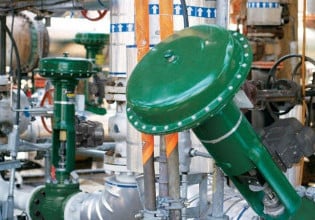Norwegian-Italian Partnership Aims for an Industrial-Scale Thermal Battery
EnergyNest is supplying one of oil & gas major Eni’s industrial decarbonization projects with a full thermal battery solution. The project, located in Eni’s Gela (Sicily) production site, has the objective of integrating renewables in the industrial process, in particular for the production of steam. A full thermal battery will be connected to a concentrating solar power (CSP) system based on Eni’s proprietary technology and combined with a micro-turbine for electricity production.
The system, in hybrid configuration with the plant, will generate continuous renewable steam during the day and over several hours at night which will partly displace steam generated with standard fossil fuel systems, and electricity, contributing to lower the plant’s carbon footprint. The system will be fully operational by the second half of 2020 and will allow savings of 60 Ton/year of CO2.
Eni’s decarbonization efforts are addressing the dual challenge of satisfying increasing energy needs, while reducing emissions in line with the Paris Agreement goals. Reducing fossil fuel consumption across its oil treatment and refinery assets is an elementary contributor to Eni’s objective of reaching net zero emissions in its upstream business until 2030.
According to the announcement, breakthrough technologies like EnergyNest’s thermal battery will substantially reduce carbon emissions and improve energy efficiency. The team of EnergyNest is proud to accompany Eni in its mission to be a global decarbonization leader.
The EnergyNest thermal battery system
The key components of the EnergyNest thermal battery include a high-performance type of concrete-like storage material, and steel; the main constituents for the storage material and the steel can be sourced globally. The system simplicity and use of low-cost materials results in very low CAPEX as well as nearly negligible OPEX throughout the lifetime of the thermal battery. Typical life time is minimum 30 years and more likely over 50 years.
Multiple elements are combined in a thermal battery module, which form the basic units that make up the thermal battery system. The modules are designed for easy transportation, on-site assembly and the majority of piping works to be prefabricated and pressure tested before installation.
Energy in form of heat at high temperature is transferred to the thermal battery using a heat transfer fluid (HTF) inside pipes cast into the thermal battery elements. There is no direct contact between the heat transfer fluid and storage material, and the thermal elements with steel piping are compatible with common HTFs such as thermal oil, water/steam or compressed gas etc., which enable straightforward integration within a wide range of applications.
The unique design enables EnergyNest to construct very compact energy storage systems with high energy density, small footprint, and very low energy losses while capacities may range from MWhth to GWhth.







